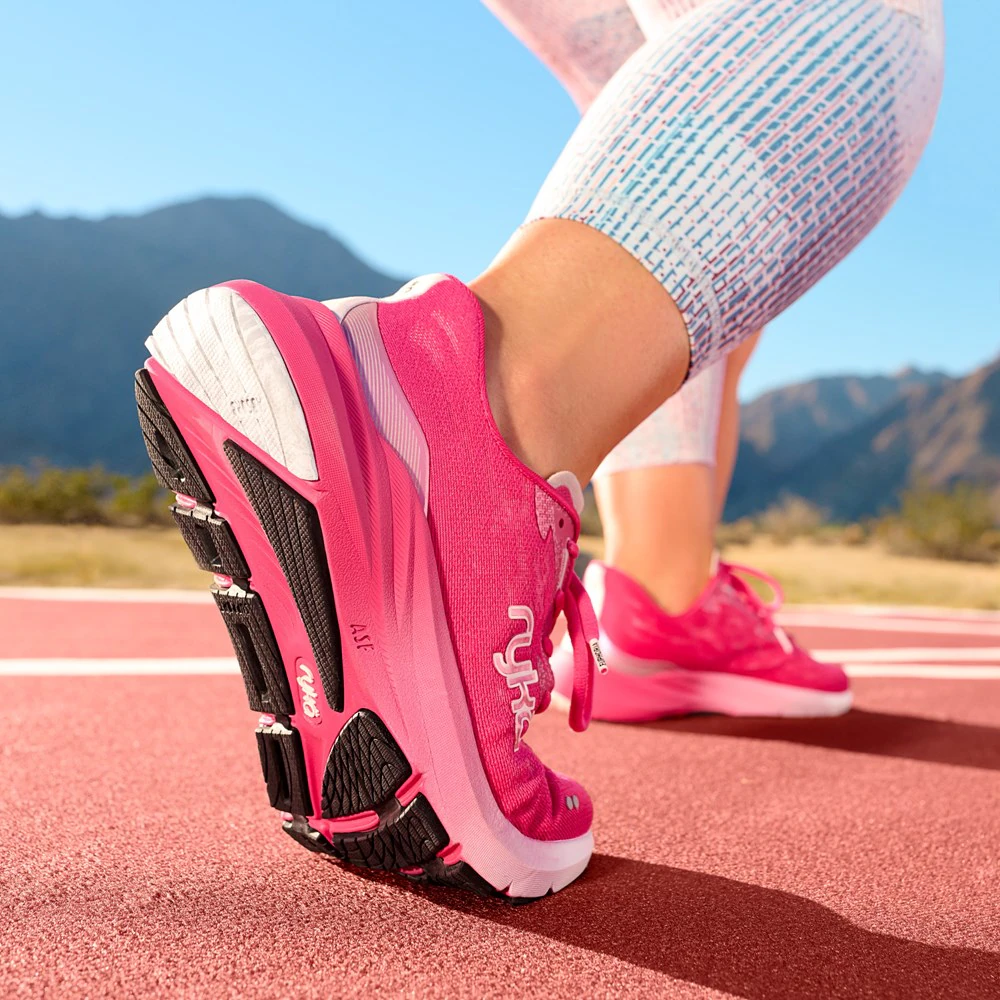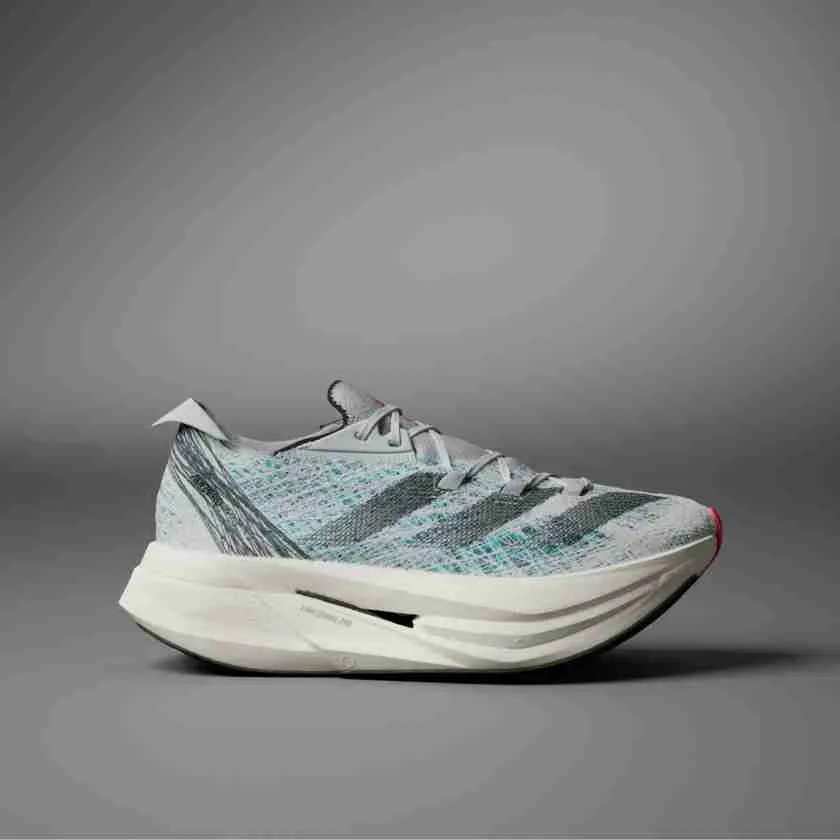The Importance of Arch Support in Running Shoes
Proper arch support in running shoes is crucial for comfort and performance. It helps prevent injuries, reduces foot fatigue, and can even improve running mechanics. When your arch is well-supported, stress on the muscles and tendons is minimized. This leads to less strain on the feet during long runs or sprints.
Arch support is also key for those with specific foot conditions. For instance, individuals with flat feet or high arches benefit greatly from shoes that offer the right kind of support. It helps maintain proper foot alignment, which is essential for balance and a natural gait. Without this support, runners might experience pain not just in their feet, but also in their ankles, knees, and hips. In fact, inadequate arch support can lead to a chain reaction of musculoskeletal issues.
Running shoes with arch support are designed to provide a stable base for your foot. This is especially important when running on uneven surfaces, as it helps prevent the foot from rolling inward or outward too much. Overall, the right level of arch support can contribute to a more comfortable and enjoyable running experience.
How to Identify Your Arch Type
Identifying your arch type is the first step to finding running shoes with arch support that suit you. Here’s how you can determine your arch type at home.
Wet Test
The wet test is a simple way to find out your arch type. Wet the bottom of your foot and step onto a piece of paper or cardboard. The imprint left behind will show the shape of your arch. If the imprint shows most of your foot, you likely have a low arch or flat feet. A narrow connection between the forefoot and heel indicates a high arch. A moderate middle area suggests a normal arch.
Visual Inspection
Stand up and observe your feet. Look at the inside of your feet while standing. Flat feet will have no visible arch, whereas high arches will lift the middle part of the foot significantly off the ground. Normal arches will have a noticeable but not exaggerated arch.
Feel Your Feet
Another way to identify your arch type is by feeling where you bear weight on your feet when you walk. With flat arches, you might notice more weight on the inner part of your foot. High arches may lead to more weight on the outer edges. Normal arches distribute weight more evenly.
Understanding your arch type is crucial because it guides you to the appropriate running shoes with arch support. Different arch types require different levels of support for optimal function and comfort. When you know your type, you can select running shoes that will enhance your performance and reduce the risk of injury.
Key Features to Look for in Running Shoes with Arch Support
When shopping for running shoes with arch support, focus on several key features. These features will ensure that your running experience is both comfortable and injury-free.
Proper Fit
A correct fit is essential. Your shoes should have enough room for your toes but snug enough to avoid slipping. Make sure there is a thumb’s width of space between your longest toe and the shoe’s end.
Arch-Specific Design
Choose shoes that match your arch type. Low-arched or flat feet need more support to prevent overpronation. High arches require cushioning to absorb impact. Normal arches need a balance of support and cushioning.
Midsole Cushioning
The midsole is where the primary arch support is. Look for firm, yet responsive cushioning. It should allow for a comfortable stride while preventing your foot from excessive rolling.
Heel Counter
A good heel counter provides stability. It should keep your heel in place and reduce the risk of ankle twists or turns.
Outsole Traction
A durable outsole with good traction will keep you stable on various surfaces. It should protect against slips while not restricting the foot’s natural movement.
Breathable Material
Running shoes should have a breathable upper. This helps to keep your feet dry and cool, reducing the risk of blisters or fungal infections.
By paying attention to these features, you can select the best running shoes with arch support for your needs. Doing so will help enhance your running comfort and reduce injury risks.
Top Running Shoe Brands for Arch Support
When seeking the best running shoes with arch support, brand reputation matters. The market boasts several top brands that consistently deliver quality and design specifically to enhance arch support for different types of feet. Here are some brands to consider:
ASICS
ASICS offers a range of shoes with Gel Technology, providing excellent shock absorption and arch support. Their models cater to different arch types without compromising on comfort.
Brooks
Brooks is renowned for running shoes that cater to overpronation and underpronation, with a focus on stability and cushioning. Ideal for runners needing dependable arch support.
New Balance
With advanced technologies like their Fresh Foam and Rollbar, New Balance shoes are a top pick for runners who need enhanced arch support and stability.
Nike
Nike incorporates its Air and Zoom technologies into running shoes, which result in responsive cushioning and arch support fitting for all runners.
Saucony
Saucony’s extensive research into the biomechanics of runners’ feet has led to the development of shoes with excellent arch support, especially for those with specific support needs.
Adidas
Adidas’ Boost technology provides a combination of comfort and energy return, with models designed to support the arch and adapt to various running styles.
Hoka One One
Known for their oversized midsoles, Hoka One One offers maximal cushioning and inherent stability, great for runners seeking extra arch support.
These brands have earned trust among runners for their dedication to quality and the ability to provide options for different arch types. Remember, the ideal way to ensure the running shoes you choose provide adequate arch support is to try them on and test them for comfort and stability.
Tips for Trying on Running Shoes
When you’re shopping for running shoes with arch support, trying them on is critical. Follow these simple tips to ensure the best fit:
Choose the Right Time of Day
Shop for running shoes later in the day. Feet swell throughout the day, and it’s best to try on shoes when your feet are at their largest.
Wear Appropriate Socks
Always wear the type of socks you plan to run in. This helps you get a more accurate feel for the shoe’s fit.
Check the Space at the Toe Box
Ensure there’s about a thumb’s width of space between your longest toe and the end of the shoe to avoid cramped toes during runs.
Walk and Run in the Shoes
Take a test walk or run in the store. This is how you’ll feel the arch support and if there’s any unwanted movement or rubbing.
Focus on Comfort Over Size
Don’t fixate on shoe size. Sizes can vary between brands. Instead, go for what feels snug and supportive.
Pay Attention to Width
Width is just as important as length. Your feet shouldn’t feel squeezed. Look for shoes that offer width options if needed.
By keeping these tips in mind, you can find running shoes with arch support that feel as good as they perform. Remember, the right shoes can make all the difference in your running experience.
The Role of Insoles for Additional Arch Support
Adding insoles to running shoes can further enhance arch support. Customizable insoles can provide tailored comfort and improved foot alignment for runners. They sometimes offer superior arch support compared to the standard insoles found in running shoes.
Insoles come in different materials, like foam or gel, and various shapes to fit distinct arch types. They can help distribute pressure more evenly across the foot, which may lead to reduced pain and injury risk. Insoles also tend to extend the life of running shoes by providing additional cushioning and support.
When selecting insoles, consider these points:
- Match Your Arch Type: Find insoles designed for your specific arch type, whether you have flat feet, high arches, or normal arches.
- Quality Material: Opt for high-quality materials that offer durability and the right balance of support and cushioning.
- Proper Fitting: Ensure the insoles fit well inside your running shoes without cramping your toes or sliding around.
- Expert Advice: Consulting with a foot specialist can help you choose insoles that align with your running goals and foot health needs.
Insoles can serve as a great investment for those needing extra arch support. Changing insoles regularly may also prevent overuse issues. Prioritize comfort and personal needs when incorporating insoles into your running routine. Remember, good insoles complement your running shoes with arch support, further enhancing your running experience.
Caring for Your Running Shoes to Maintain Optimal Arch Support
To keep your arch support at its best, caring for your running shoes is important. Here are tips to extend their life and maintain support level.
Keep Them Clean
Dirt and debris can break down materials and lessen support. Clean your shoes gently with mild soap and lukewarm water. Air dry away from direct heat to prevent warping.
Rotate Your Shoes
Using the same pair daily accelerates wear. Have two pairs and alternate them to let each shoe regain its shape and prolong their lifespan.
Dry Them Properly
After a wet run, remove insoles and laces, and let shoes air dry. Stuffing them with newspaper absorbs moisture and helps maintain their shape.
Avoid Excessive Heat
High temperatures can damage your shoes. Don’t leave them in a hot car or use a direct heat source to dry them.
Use Them Only for Running
Wearing your running shoes for other activities can cause uneven wear. Use them exclusively for running to keep the arch support intact.
Inspect Regularly
Check for signs of wear, like uneven sole wear or insole compression. Early detection means you can address issues before they affect arch support.
Store Correctly
Keep your shoes in a cool, dry place, preferably on a shoe rack. Proper storage helps retain their shape and arch support quality.
Lace Appropriately
Correct lacing ensures a secure fit and proper support distribution. Don’t over-tighten or leave too loose; it should be just right.
By following these straightforward care tips, you provide the best conditions for your running shoes with arch support. This ensures they continue to support your feet effectively with every run.
When to Replace Your Running Shoes
Knowing when to replace your running shoes is key to maintaining foot health and arch support. Here are signs that indicate it’s time for a new pair:
Tread Wear
Check the outsole. If the tread is smooth and worn down, it’s time to replace. Good tread is vital for traction and stability.
Midsole Feel
A worn midsole affects cushioning and support. If your shoes feel flat or less responsive, consider getting a new pair.
Shoe Deformation
Over time, shoes lose their shape. If they tilt when placed on flat surfaces or the back of the shoe is broken down, they should be replaced.
Discomfort or Pain
Discomfort or pain during or after a run indicates insufficient support. New shoes with proper arch support can alleviate this.
Mileage Check
Running shoes should be replaced every 300 to 500 miles. Track your mileage to know when to shop for new ones.
By monitoring these factors, you can ensure you always run with the necessary support and comfort. Regular replacements safeguard your arch support and ultimately enhance your running performance.




